
It’s crazy to think that Asta and I used to be at University of the Philippines Diliman almost every day as students. We’re taking a trip down memory lane in this post as we come home to UP Diliman, with Mariah in tow!
The University of the Philippines Diliman, more commonly known as UP Diliman, is among the key places in Metro Manila where history, academics, and a whole lot of walking come together. When I was studying here, I could easily do 12,000 steps a day just going from one class to another. There’s just so much to do in this gigantic campus. Because it is a public university, you can also enjoy this space even if you are not a student, faculty, or staff.
UP Diliman will always be precious to me and Asta as alumni. We’re so excited to share more about this beautiful campus with you. Here are the top 15 things to do and places visit in UP Diliman!
WHAT'S IN THIS GUIDE?
Things to Do & Attractions
Ride the UP Ikot!
I mean, if we’re talking about UP Diliman icons, the UP Ikot has to be on the list! The UP community has a wildly different understanding of what “walking distance” means. These yellow jeepneys will be your lifesaver if you’d like to tour the campus.
You can hop on or hop off based on your itinerary. However, note that you’ll have to pay the minimum fare, which right now is at P13, upon every ride.

These jeepneys are called “Ikot” which means “to go around” in Filipino. This is because the route of the Ikot jeep exclusively goes around the UP Diliman campus. Other jeepneeys go in the university and go out onto other parts of Quezon City, but the Ikot will always just move within the campus. You’ll know it’s an Ikot jeep because of its iconic yellow roof.
A heads up to any first timers! The Ikot jeep WILL go outside the UP gate. But don’t panic! You are right on track.
I know, it’s a bit counterintuitive to what I just said but hear me out! Going out through the gate near the Centennial Residence Hall and entering the gate near the National Institute of Geological Sciences is one of the easiest ways to navigate this side of the campus. Just trust your ikot driver!
Balik-Yapak: A UP Diliman Walking Tour
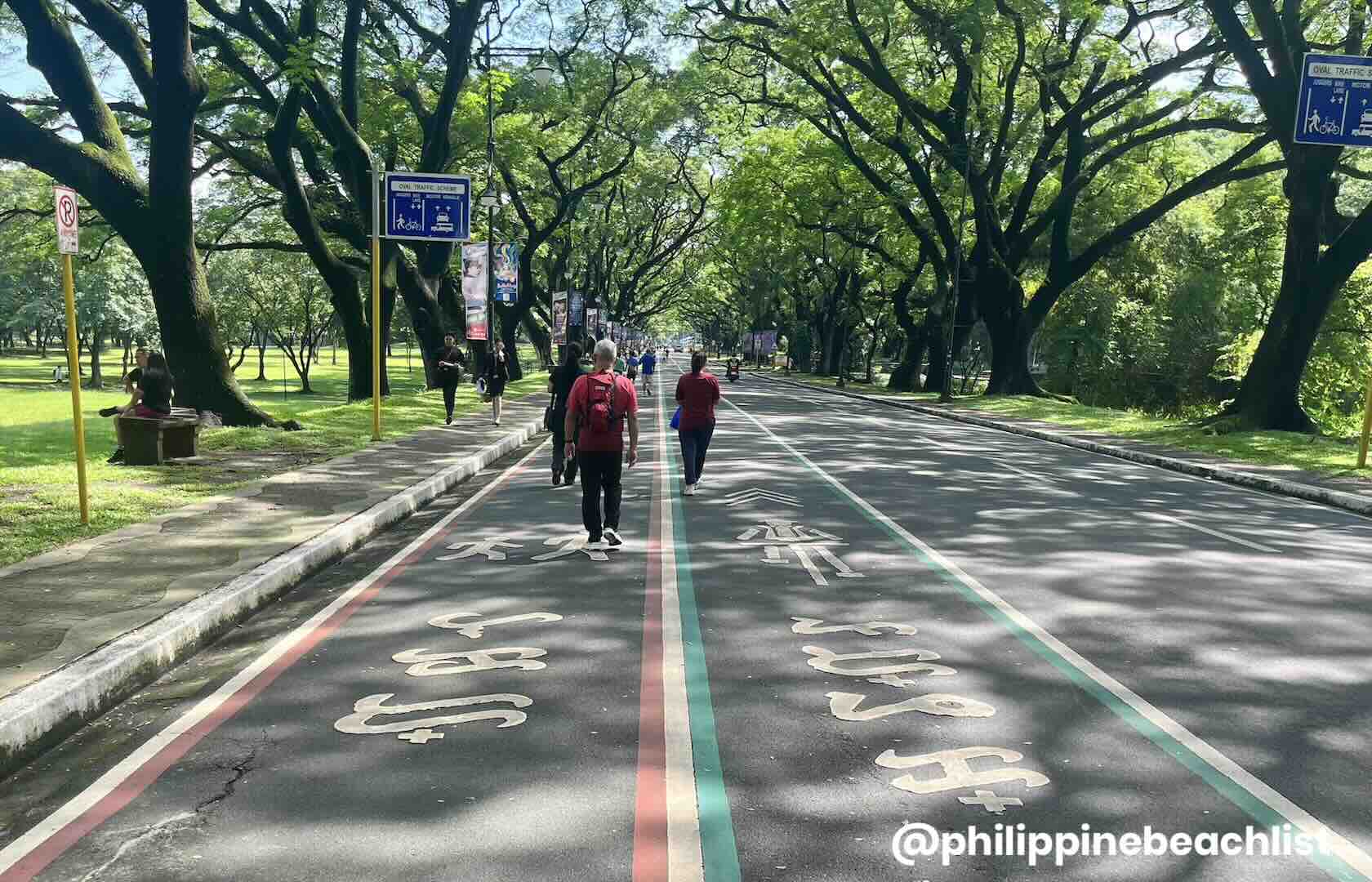
Like I said, “walking distance” means something completely different to the UP community! The Academic Oval is 2.2 kilometers around and many will use it as a form of measurement when getting around the campus. I don’t know about you, but 2.2 kilometers is definitely no short distance. However, it’s easier to gaslight yourself into thinking it’s not that far when you go building by building. (When you’re a student moving from one class to another without a car and out of the way of the UP Ikot, it’s not like you have a choice!)
But with this self-guided tour around UP Diliman, the steps may just fade away as you enjoy listening to the voiceovers. Balik-Yapak, a UP Diliman walking tour initiated by the Asian Institute of Tourism, is a new way to appreciate the university’s history and culture.
It features six pioneer buildings within the campus: Quezon Hall, Gonzalez Hall, Melchor Hall, Palma Hall, Benitez Hall, and Malcolm Hall. Around these buildings you will find QR Codes with written information on the structures or voiceover audioguides.
You’ll enjoy the tidbits of information you’ll get from these guide. Most of the information on these first six stops were actually gathered from the tour as well.
Quezon Hall
Our first stop is Quezon Hall, the iconic administration building named after former President Manuel L. Quezon. This is where the magic happens…or at least where the paperwork does. Beyond the modern architecture of Quezon Hall, it is the Oblation that gives this area significance because it stands right in front of it. Designed by National Artist Guillermo Tolentino, the statue represents selfless dedication, a value the university hopes its students will carry with them forever.
But more than what the statute symbolizes, it’s the graduation lore that follows the Oblation or Oble everywhere. Even the most unsuperstitious of UP students will not dare take a picture with Oble before their graduation for fear of delaying it or not getting that diploma at all. Asta actually took her first picture with the Oblation or Oble years after graduating. As for myself, I didn’t dare come near Oble until I was well into my fourth year of college.

If you’re not a UP student, please feel free to take a picture with Oble. The statue faces west so the area gets beautiful lighting during sunrise and sunset.
TRIVIA! The original Oblation statue is located on the third floor lobby of the UP Main Library (Gonzalez Hall).
Gonzalez Hall
Next on the list is Gonzalez Hall, otherwise known as the UP Main Library. You’ll most likely hear students call it the “Main Lib”. Juan Nakpil, Quezon Hall’s architect, also designed the Main Lib. It’s actually named after Bienvenido Gonzalez, a former UP President. Since my college had its own well-equipped library, I only ever went here for its extensive Filipiniana section. However, I do know a fair number of people who frequented this library.
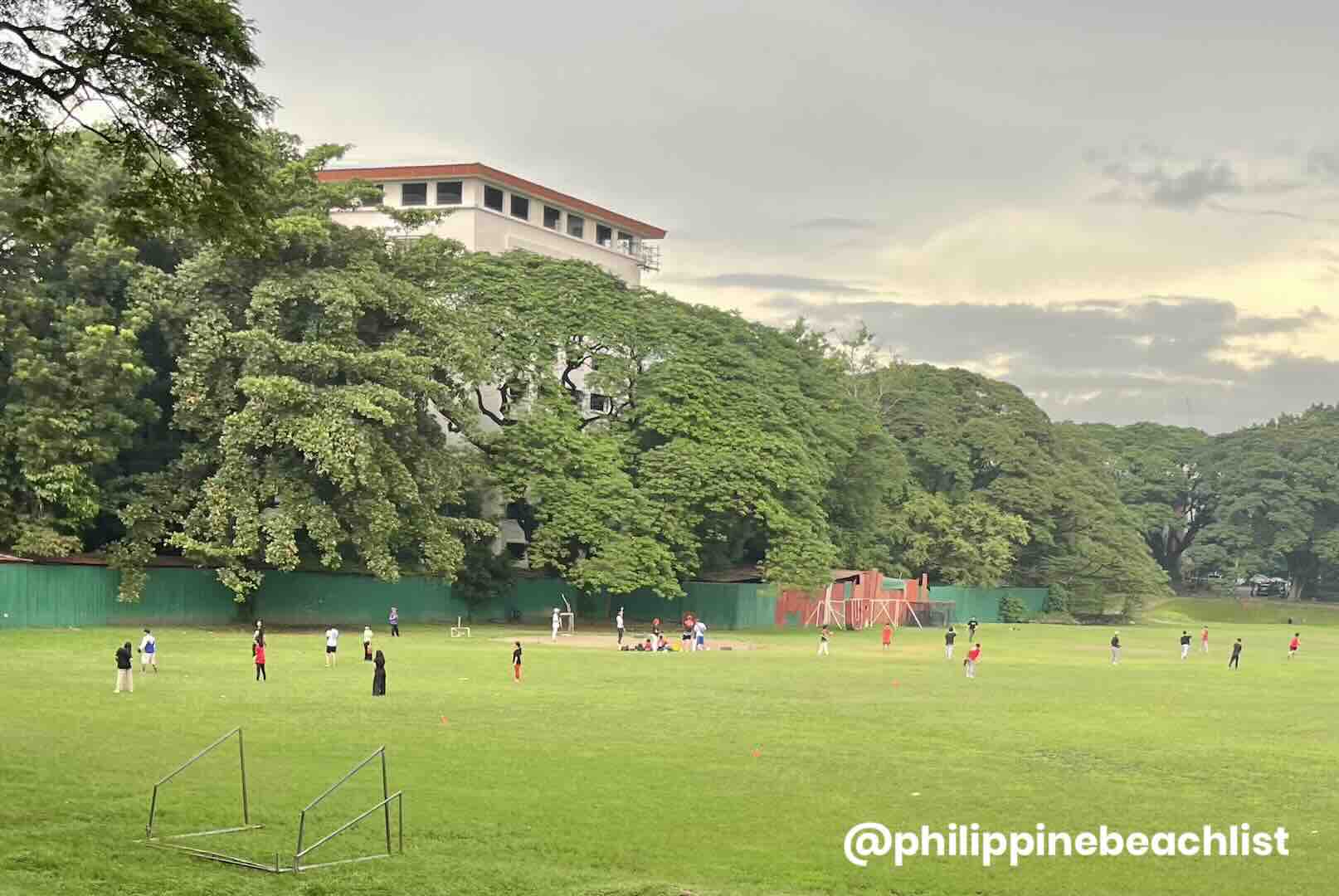
In general, most libraries in UP Diliman are not open to the public, but the Main Lib’s exteriors are accessible to any visitors. Please note that Gonzalez Hall is currently undergoing renovations.
Melchor Hall
UP Diliman hosts two pairs of twin buildings and the first pair in this list is Melchor Hall and Palma Hall. Melchor Hall is the College of Engineering. Named after former Dean Alejandro Melchor, who was an engineer himself, this hall is home to a variety of engineering disciplines.
Melchor Hall is a mirror image of Palma Hall which sits on the other side of the Academic Oval. The neoclassical design of both buildings allows natural light to illuminate its halls. But make no mistake: Melchor Hall does have its own charms aside from being Palma Hall’s twin.
You’ll find two gigantic sundials on the building’s premises. The first sundial followed the College of Engineering all the way from Padre Faura when the main campus moved to Quezon City. It’s tucked away on the rear right side of the college along Apacible Street.

The second sundial is a bit more visible and to the general public, it may just look like a gigantic blue and yellow sandal. It is known as the Centennial Sundial because it commemorates 100 years of the College of Engineering. It sits on the west lawn of Melchor Hall. Additionally, it blends new with the old by using a motorized pointer to compensate for changes during the different seasons of the year.
Palma Hall
If you want to roll with the locals, never call this building “Palma Hall.” Most of the UP community calls it “AS”. AS is the home of the College of Social Sciences & Philosophy. At one point it was known as the Arts & Sciences Building, hence the nickname.
Named after Rafael Palma, the first Filipino UP president, AS has quite the history. This is also where the UP community congregated to contest the militarization of the university in 1971 for the Diliman Commune. In 1972, Senator Benigno “Ninoy” Aquino delivered his final speech before his assassination atop these steps. These steps are also the starting or ending point for the many protests mounted within the university.
You will probably never encounter a student who has never stepped foot in AS. Even if you’re not from CSSP, you will likely have at least one class here as most General Education classes take place in AS. I distinctly remember cramming for my exams in Philo 1 or Soc Sci 2 right outside the classroom as the class before me was already taking said exam.
Like Melchor Hall, light streams in through the open balconies of the building, which totally adds to the nostalgic effect of AS. It feels like being the main character of a movie walking these halls, never mind that you just got a singko, a 5, a failing grade.
Benitez Hall
Benitez Hall sits along the same length of the Academic Oval as Palma Hall and is the twin building of Malcolm Hall.
Named after Francisco Benitez, this hall is home to the College of Education, one of the oldest units in UP. It’s known for producing top-notch teachers who’ve made an impact in classrooms across the Philippines. Designed by Filipino Architect Juan Arellano, Benitez Hall is a mirror image of Malcolm Hall or the College of Law.
The UP College of Education was actually the first institution in the Philippines to offer a doctorate in Special Education in the country. Aside from educational achievements, Benitez Hall might just be more famous for its urban legends.
Readers of True Philippine Ghost Stories will know the story of the howling at Benitez Hall and the ghost with the red eyes. Give it a search before you visit Benitez Hall and let us know if it gave you a spook!
Malcolm Hall
Malcolm Hall is named after George Malcolm, the first dean of the College of Law. As the twin building of Benitez Hall, it essentially carries the same facade. The UP College of Law has a long-standing reputation of producing top-notch legal minds, producing 49 bar topnotchers since 1913.
Many of the leading figures in Philippine politics are actually products of Malcolm Hall such as presidents, chief justices, and senators. Even some prominent Filipina beauty queens are graduates of UP Law!
That ends our Balik-Yapak tour, but mind you, we’ve still got a few items on this list! I’d argue that the next item will actually interest you the most if you’re not a member of the UP community.
Take a breather at the Sunken Garden.
The Sunken Garden is the most prominent green space on campus. No one really knows why the Sunken Garden is sinking, but authorities suspect that it could be due to the campus waterway system, which goes along the sides of the Sunken Garden.
I honestly can’t say much about it, because I’ve never really given its sunken nature a thought, except when I’ve had to walk back up to the Academic Oval at 3AM after UP Fair. The Sunken Garden sees quite a few of the bigger social events of the community such as concerts which are often open to the public for a small fee.
On quieter days, you’ll find people scattered around the sunken garden having picnics, playing frisbee, or even crying their heart out on one of the iconic red benches surrounding this area.
Stroll around the Lagoon & along the Tau Alpha Legacy Boardwalk.
And because I mentioned the Sunken Garden, I have to mention the UP Lagoon. Another green landmark (or should I say blue?) in UP Diliman, the UP Lagoon is the only body of water in the campus.
It used to cover a much bigger area than it does now. Today, the lagoon is mostly covered by water lilies. However, it used to be home to mudfish, catfish, tilapia, ducks, and even flocks of sheep!
Nowadays, it’s much easier to access the UP Lagoon through the Tau Alpha Legacy Boardwalk. To be very honest with you all, this boardwalk surprised me because it was not there when I graduated in 2022! I actually used to fear rolling down into the grassy area near the Lagoon when I had to walk along the Freshie Walk, which cuts between the Academic Oval. You could just imagine my surprise when I saw that there was now a walkway and cobblestones in the middle of the Freshie Walk!
Just like the Sunken Garden, people take advantage of the green space surrounding the lagoon and lay out their picnic blankets near this body of water.
Get your art fix at Vargas Museum.
Art lovers, this one’s for you. The Vargas Museum is named after Jorge B. Vargas, who donated his vast art collection to UP. The museum houses an impressive array of Philippine art.
It’s also home to artifacts from Philippine history, making it the perfect place to get your culture fix. Whether you’re here for the art or just looking for a quiet escape from campus life, the Vargas Museum is the place to be.
I used to be here all the time on Wednesdays, because it’s free for UP students, staff, faculty, & alumni upon the presentation of the UP ID. But for visitors, I’d say that the P20 fee for students, persons with disabilities, and senior citizens and P50 for other non-UP visitors isn’t too bad.
Works of Filipino masters like Fernando Amorsolo and Juan Luna stand alongside each other in the museum’s permanent exhibitions while more contemporary artists and other collections by Vargas can be viewed on the first and third floors.
Keep your eyes peeled for talks, workshops, and other events hosted by the museum’s management, which you can find on their very active Facebook page.
Opening Hours: Tuesday to Saturday, 9:00 AM – 5:00 PM; Monday & Sunday, CLOSED
Admission Rates: All Students, PWD & Senior Citizens, P20; UP Community, P40 (FREE every Wednesday);
Non-UP, P50
Guided Tours: P200 for groups of 10 people or LESS
Spot the Sculptures and Art Installations.
And speaking of art, the whole UP Diliman campus is an art lover’s pleasure, with sculptures and installations scattered all over its map. Many of these pieces will have markers explaining their history, but sometimes it’s also just enough to see them from afar.
The next time you’re having your morning jog in UP, either stop to appreciate the art around the Academic Oval or make a stop at Vargas Museum!
Visit the Churches within UP Diliman.
Out of all of the Big 4 universities (which are UP, Ateneo de Manila University, University of Santo Tomas, and De La Salle University), UP is the most secular. It is literally the only non-Catholic, non-sectarian university among the four.
Despite that, two churches thrive within the community.
First, we have the Parish of the Holy Sacrifice, an architectural and spiritual gem. Designed by National Artist Leandro Locsin, this church is round, but beyond it’s shape, it’s the works of National Artists that adorn its walls that makes this church a must-see, even for the non-religious. You’ll find murals by Vicente Manansala, Ang Kiukok, and Arturo Luz and sculptures by Napoleon Abueva. Whether you’re here for mass or just admiring the art, it’s a place that brings peace to both the mind and the soul.
A short walk away is the Church of the Risen Lord, a Protestant church with a simple, clean design that feels both welcoming and serene. It’s a reminder of the diversity of faiths represented on campus. Whether you’re attending a service or just seeking a peaceful moment away from the hustle and bustle, this place offers a calm retreat. It’s especially beautiful during quiet afternoons, where the tranquility almost makes you forget about that 25-page paper you haven’t started yet…or maybe I’m just speaking for myself? HAHAHA!
Listen to the Carillon bells tolling.
Brainchild of National Artist Juan Nakpil, the 130-foot Andres Bonifacio Centennial Carillon, popularly known as the UP Carillon Tower, serves as a reminder of the university’s values. Aside from its hourly tolling, the Carillon has rung and played music during various historical events, bearing witness to pressing issues our nation has faced.
One instance close to our hearts would be the tolling of the Carillon’s bells in support of press freedom when the cease & desist order against the ABS-CBN Corporation was given. Both Asta and I are graduates of the College of Mass Communication (now College of Media and Communication) so this was a touching moment for both of us.
Interestingly enough, the Carillon Tower is the only structure in the university with an unofficial Twitter or X account. The account is currently restricted for some reason. However, you may just be able to view some of its posts, which basically just narrate the tower’s hourly activities.
Catch a movie at Cine Adarna.
We made sure this was included in the list for all you film buffs out there! The Cine Adarna is actually just one part of the UP Film Institute Film Center, which is a building complex that includes the Ishmael Bernal Gallery, the Videotheque, and the Cine Adarna.
Visitors will likely only be familiar with the latter. The Cine Adarna was designed by Honorato Paloma and it’s distinct red brick façade has roots in early postmodern architecture.
A diversity of films make its way to Cine Adarna’s slate of shows each year. Most titles will be local, but international film festivals also find their way to this movie theatre.
Aside from being a cinema, some events are also held inside the theatre such as symposia, performances, and graduations. I actually graduated twice in this theatre since both my high school and college graduations were held here.
Eat!
With the amount of walking you’ll be doing, the next logical step would be to do a food trip! Something I realized about universities is that they are usually a hub for delicious eats, especially since students are always on the lookout for a filling meal that won’t break the bank.
UP Diliman has some great eats scattered across its map, covering a wide variety of price points and cuisines. We’re creating a separate post covering some of the best places to eat in UP Diliman!
Learn more about Philippines biodiversity at UP Bio Arboretum.
The UPIB – EDC Binhi Threatened Species Arboretum was officially launched in December 2014 as a partnership project of the UP Institute of Biology and Energy Development Corporation, which aims to promote rich Philippine biodiversity and its conservation. It primarily focuses on saving and protecting our country’s threatened tree species.
The UP Institute of Biology collaborates with various organizations and like-minded individuals in conducting nature walks and similar activities. These are not regular tours, but if you are interested in joining such activities, you can visit UP Institute of Biology’s Facebook page for more details and announcements.
Just this May, I participated in the Likas-Wika Poetree Walk. The tour was led by Ms. Abigail Garrino, a Biodiversity Research Laboratory (BRL) research associate at UP Diliman, and Celine Murillo, an artist and an environmentalist promoting and mainstreaming Philippine biodiversity and natural heritage through several social media platforms and a close friend of mine.
The tour was a combination of science and art. As we explored the arboretum and discussed the importance of native trees, we were also treated to poetry readings at some stops. I particularly liked sampling the edible Malakatmon flower, which looked like dried mangoes but tasted like thinly sliced apples.
But my main takeaway from the tour was this: It’s a give-and-take relationship. Nature protects us, but we must also protect it. We cannot always take; we must listen to nature’s cries before we find ourselves crying over irreversible losses.
Contributed by: Asta Alvarez
Do a Maginhawa food crawl.
Maginhawa Street, the main artery of UP Village and Teacher’s Village, has grown into quite the food hub in recent years. According to Asta, it was relatively quiet during her university days, with only a handful of eateries and bars. Today, Maginhawa has evolved into a bona fide foodie paradise, flanked with countless food stalls, bars, restaurants, and even general services like dental clinics, laundromats, supermarkets, and the like.
Many of the must-try spots in this area can be found along Maginhawa like Friuli Trattoria, Crazy Katsu, Jess & Pat’s, and Talisay, but you’ll find other gems along connected streets, especially Malingap Street. Malingap hosts food parks like Z Compound and Sagul, which are great for a few drinks, and grocery stores like a minimart by Puregold and the Monterey Community Market.
Along CP Garcia Avenue and Mayaman Street, you’ll find a branch of GUBAT, a Filipino restaurant with a unique take on restaurant dining that had us so curious, we just had to try it! You’ll find out more about GUBAT in our Where to Eat in UP Diliman article.
Find more shops and food choices at UP Town Center.
Just a footbridge away from the UP Campus, the UP Town Center or UPTC is a vibrant hub for foodies, shoppers, and the different communities from the universities in the area.
It has department stores, retail shops, and a ton of restaurants, with a wide range of options. Admittedly, student-friendly options are a bit limited, but restaurant choices are interesting and varied. You’ll also find quite a few coffee shops brimming with students and remote workers.
Beyond food, the mall is home to a variety of retail shops, including trendy clothing boutiques, local artisan stores, and bookshops. For entertainment, UPTC offers a cinema complex, perfect for catching the latest blockbuster or indie flick after a long day.
Aside from having a wide variety of offerings in terms of food spots and shops, UP Town Center has quite a few open spaces.
The mall also hosts pop-up markets, small businesses, and even live performances, which you’ll find in their outer corridors and open areas.
If you’d like to visit UP Town Center from UP Diliman, just exit through UPD’s Shuster Gate and cross this footbridge.
Opening Hours: Monday to Sunday, 10:00 AM – 9:00 PM. Note that the opening Hours may change without prior notice.
Address: 216 Katipunan Avenue, Diliman, Quezon City, 1101 Metro Manila
Join in the UP Lantern Parade festivities.
One of the biggest festivals in UP Diliman is the UP Lantern Parade, alongside UP Fair, which we touched on in our Sunken Garden item. Both the UP Lantern Parade and the UP Fair have long been embedded in the university culture but also attract swarms of visitors.
The UP Lantern Parade happens in December, a week or two before Christmas. For this year (2024), it will be held on December 18.
The university’s various colleges and organizations design and build a giant lantern and parade them along the Academic Oval. It has grown into quite the battle of the colleges, with lanterns growing grander and grander each year. It’s a great event not only for students from UP Diliman but also for visitors looking for a lively close to the year.
And there you have it — UP Diliman, where history, academia, art, and a little bit of chaos meet everyday along the Academic Oval.
Where to Stay in Quezon City
In case you are planning to stay near the UP Diliman area, you’ll find tons of hotel in Quezon City or Kyusi, the home of the sprawling national university. The city is also your gateway to the attractions in the North Luzon provinces. Here are just some of the top-rated hotels as reviewed by online users.
Top Hotels on Agoda
- NOVOTEL MANILA ARANETA CITY HOTEL
✅ Check Rates & Availability Here! - RED HOTEL CUBAO
✅ Check Rates & Availability Here! - EUROTEL VIVALDI
✅ Check Rates & Availability Here! - THE SENTINEL RESIDENCES
✅ Check Rates & Availability Here! - RED PLANET CUBAO AURORA BOULEVARD
✅ Check Rates & Availability Here!
Top Hotels on Hotels.com
- IBIS STYLES MANILA ARANETA CITY
✅ Check Rates & Availability Here! - VISTA HOTEL CUBAO
✅ Check Rates & Availability Here! - HOTEL DREAMWORLD ARANETA CUBAO
✅ Check Rates & Availability Here! - HOTEL 99 CUBAO QUEZON CITY
✅ Check Rates & Availability Here! - ACL SUITES
✅ Check Rates & Availability Here!
If you want more suggestions with more details about each hotel, you can also check our Top 10 Hotels in Quezon City article.
Find more Quezon City Hotels!
Updates Log
2024.11.07 – First uploaded
Related Article: How to Get from Manila Airport (NAIA) to Quezon City
More Tips on YouTube ⬇️⬇️⬇️

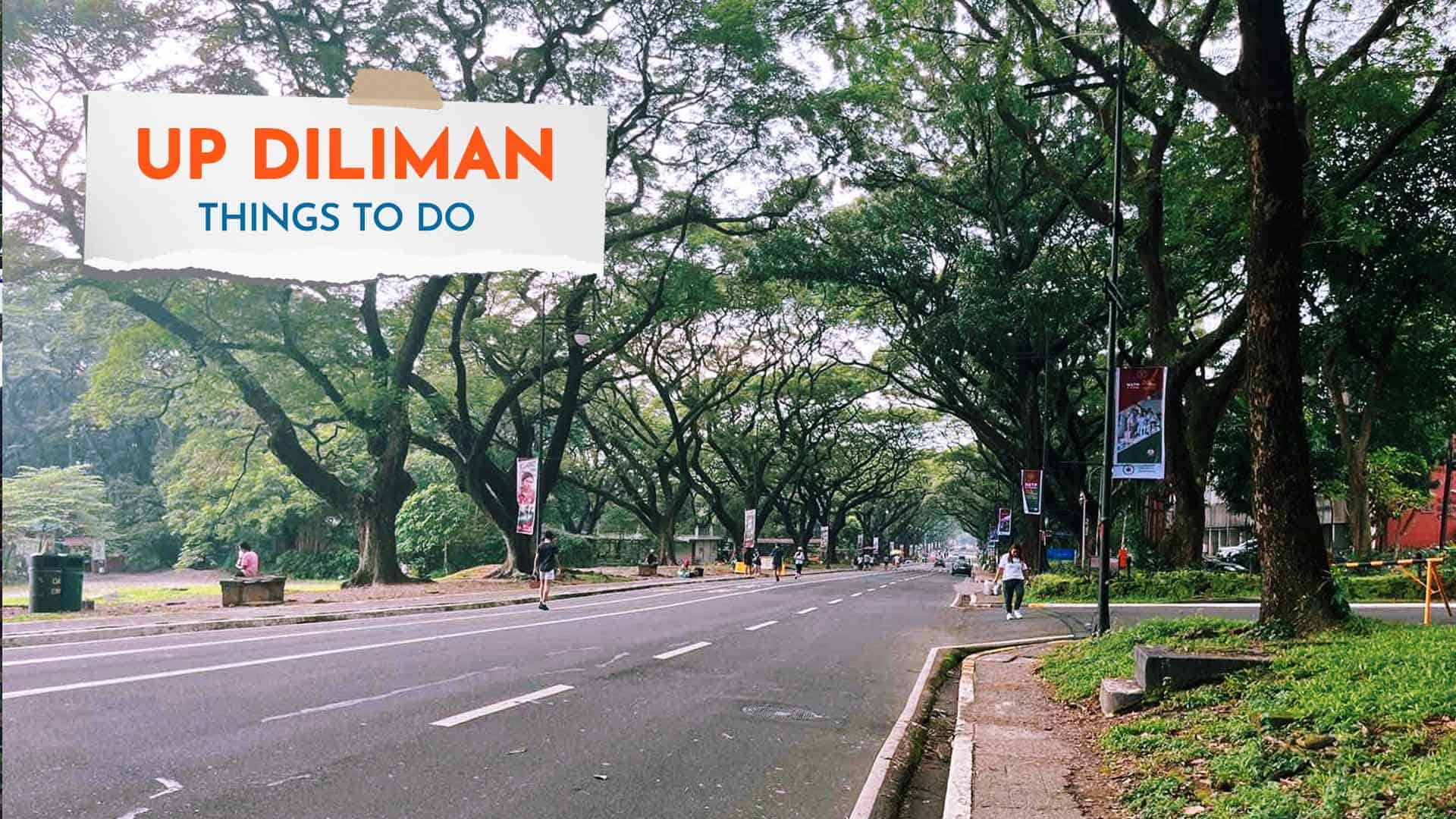


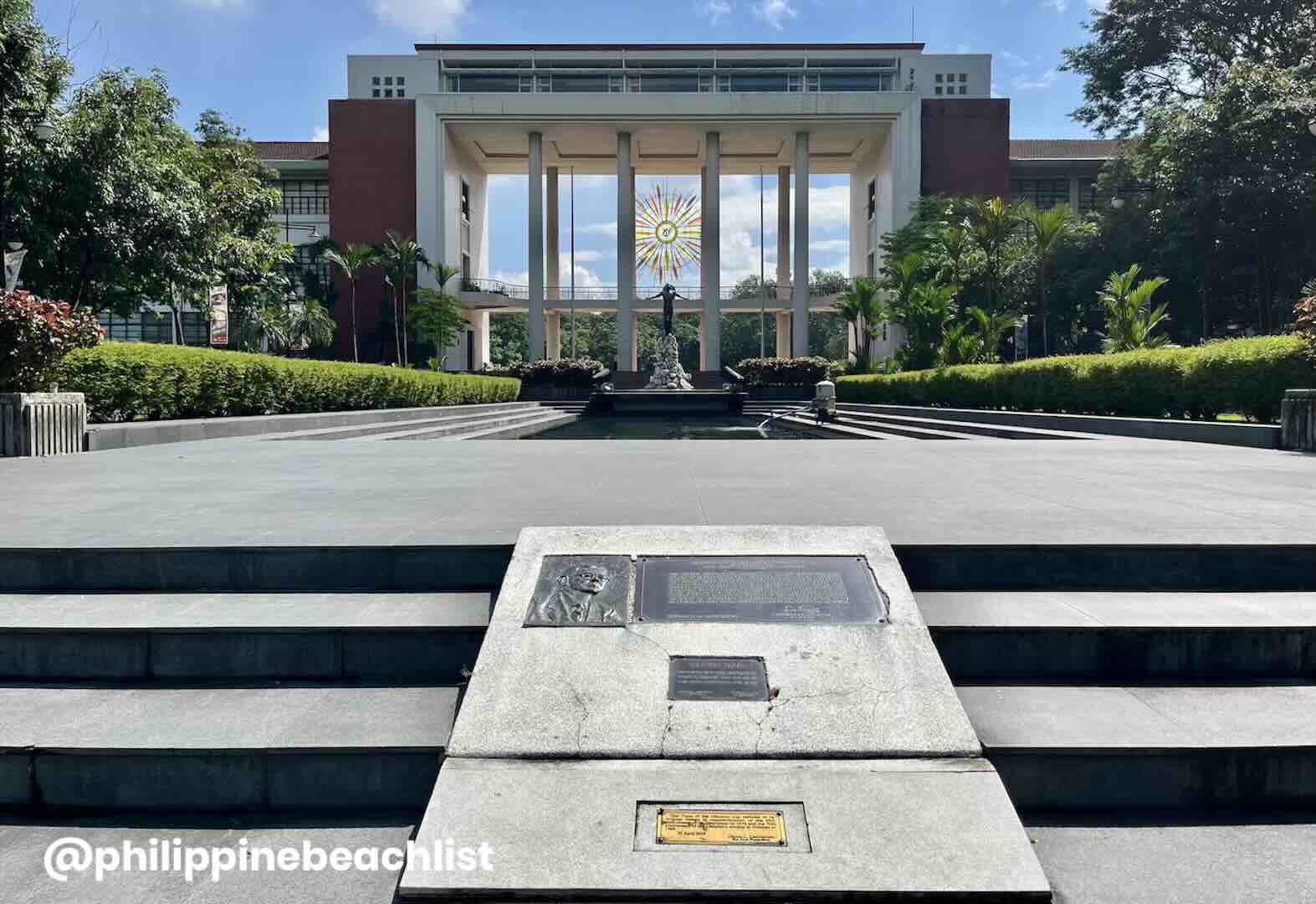

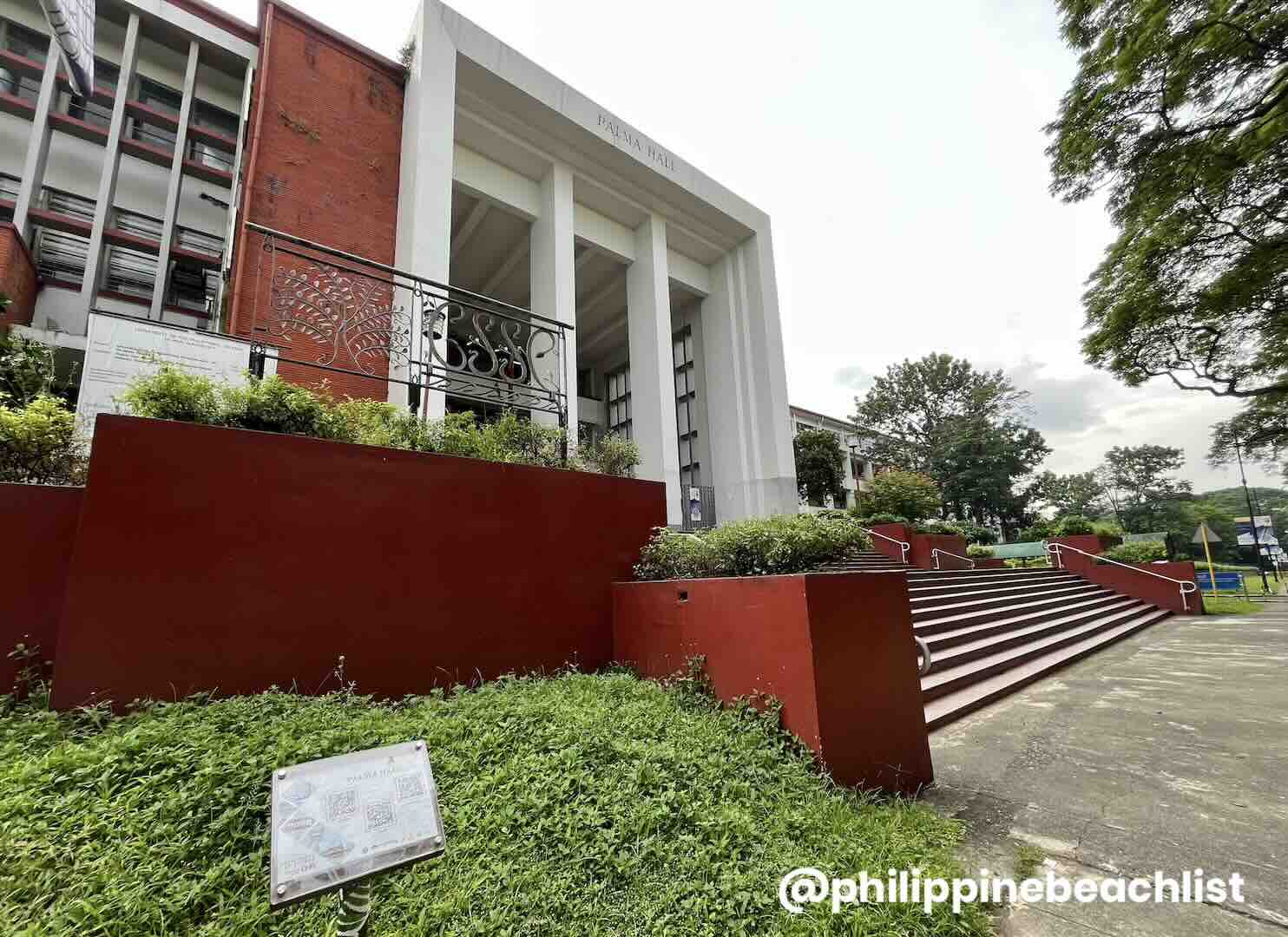



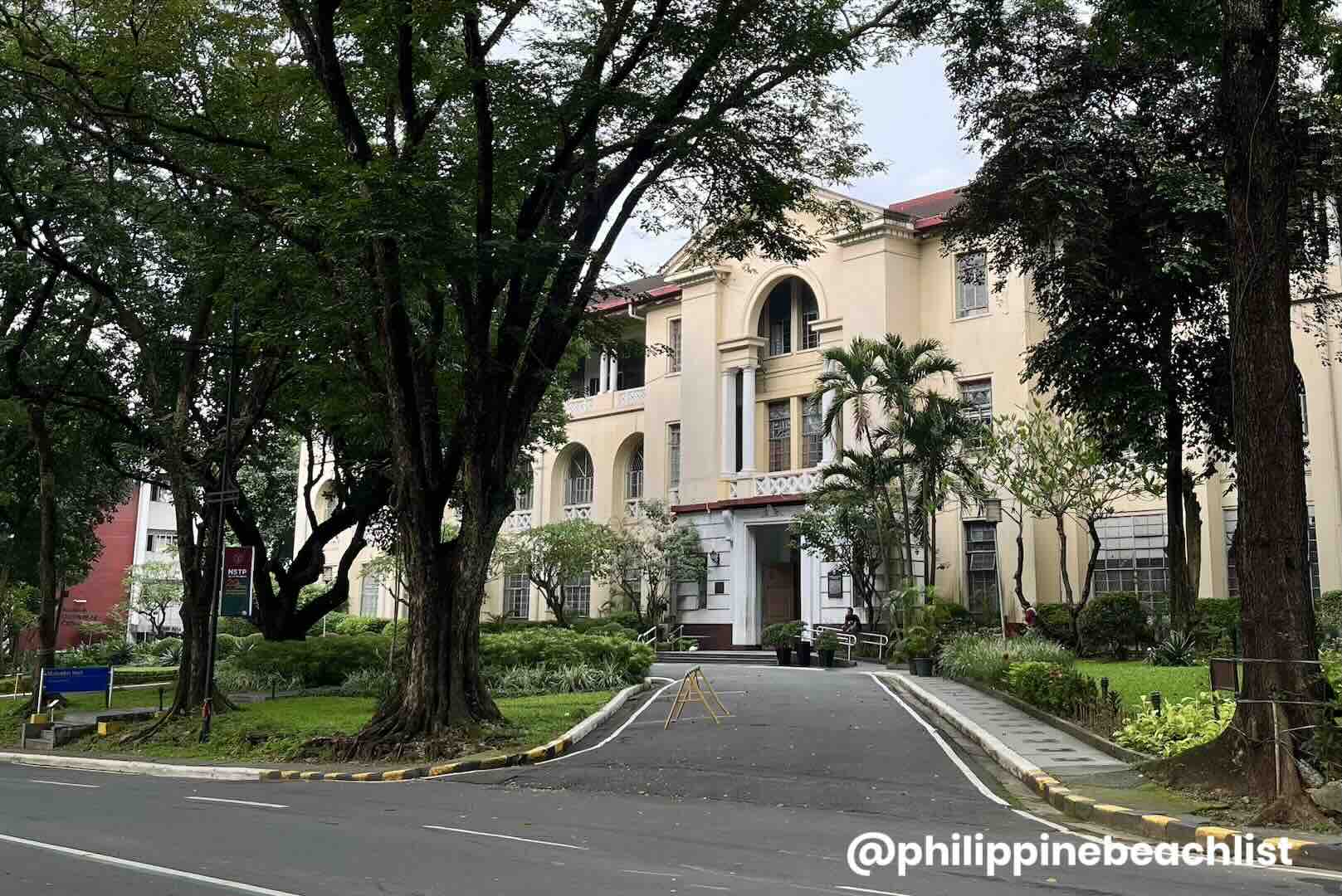

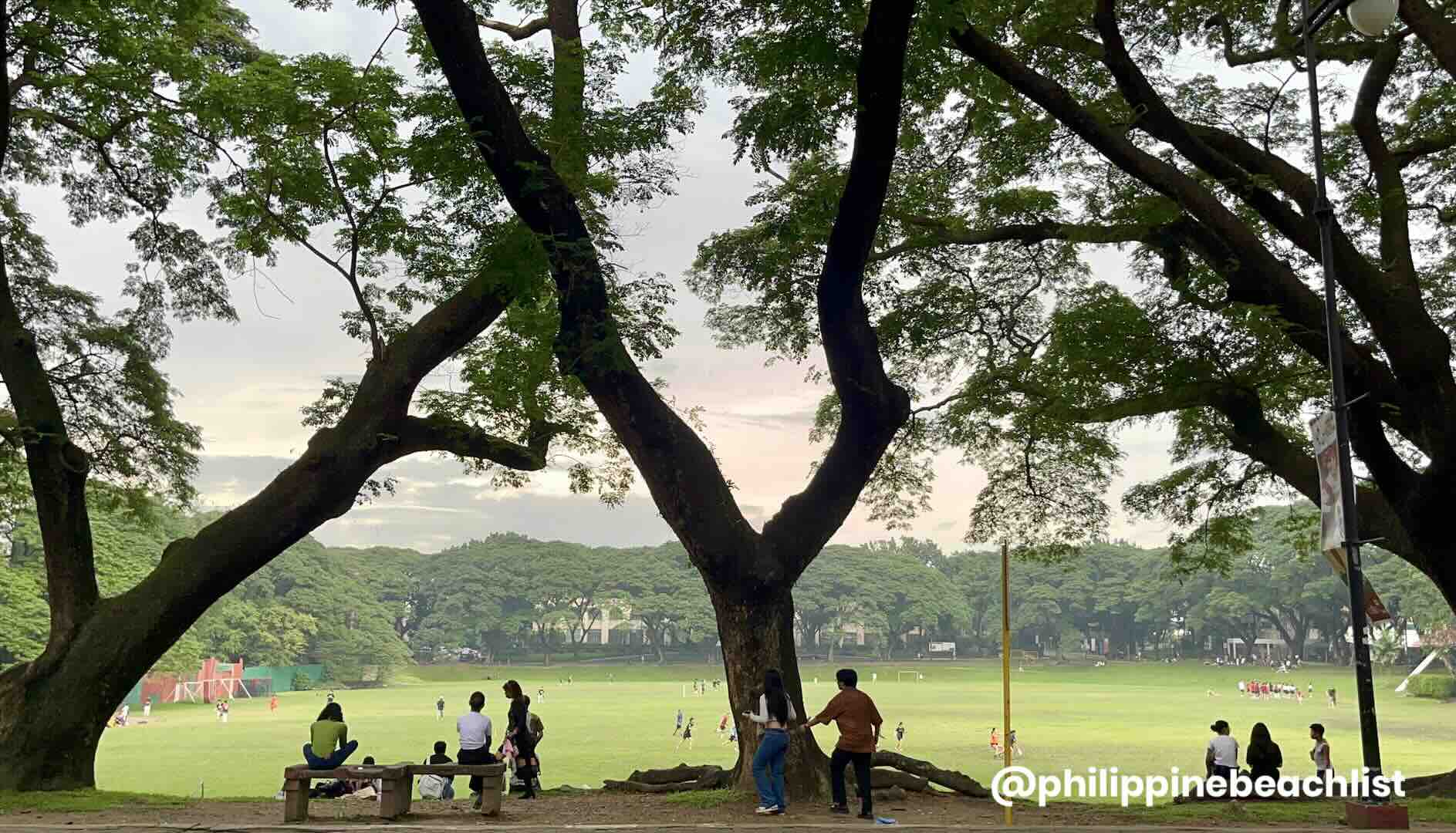




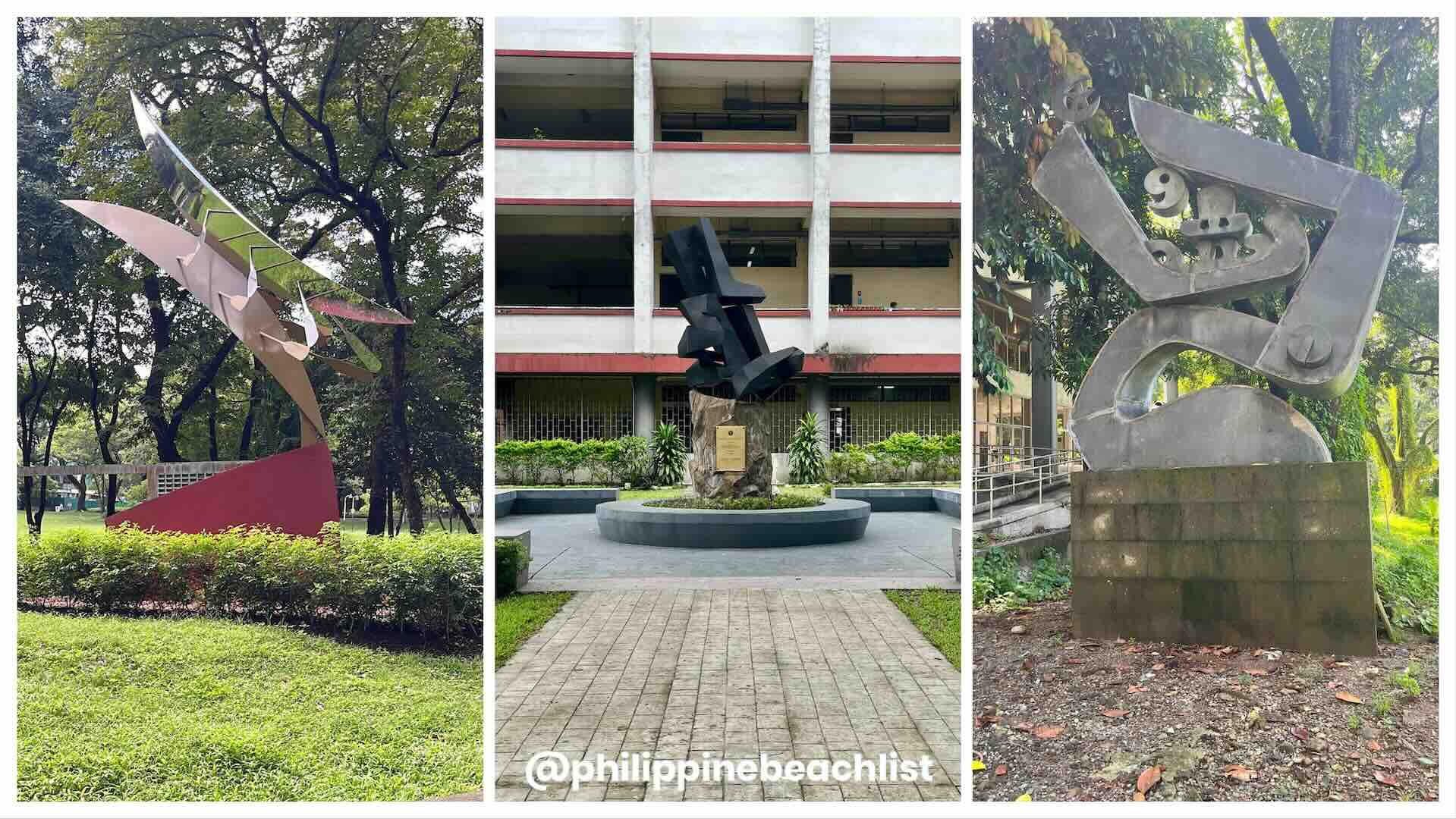



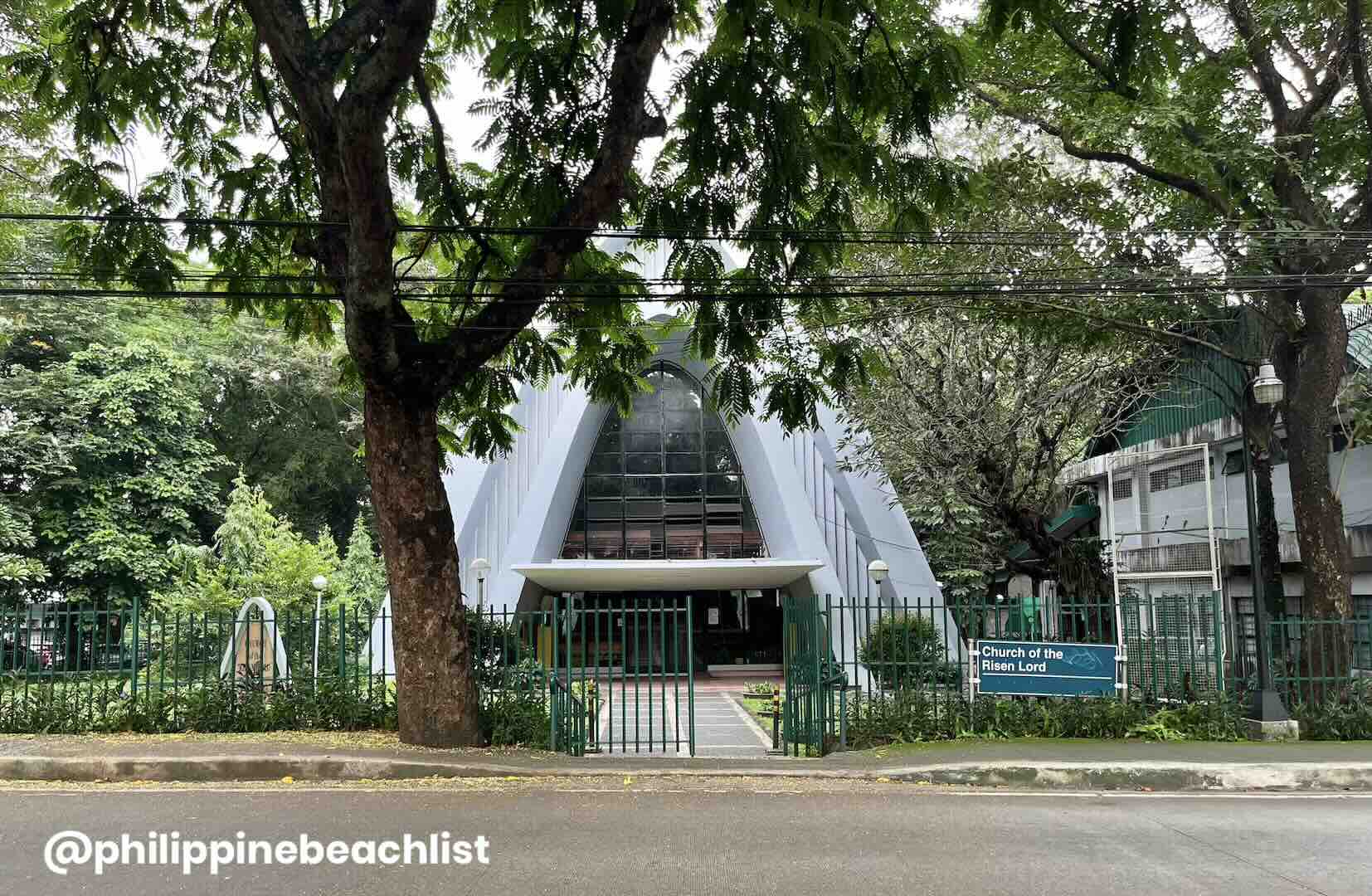


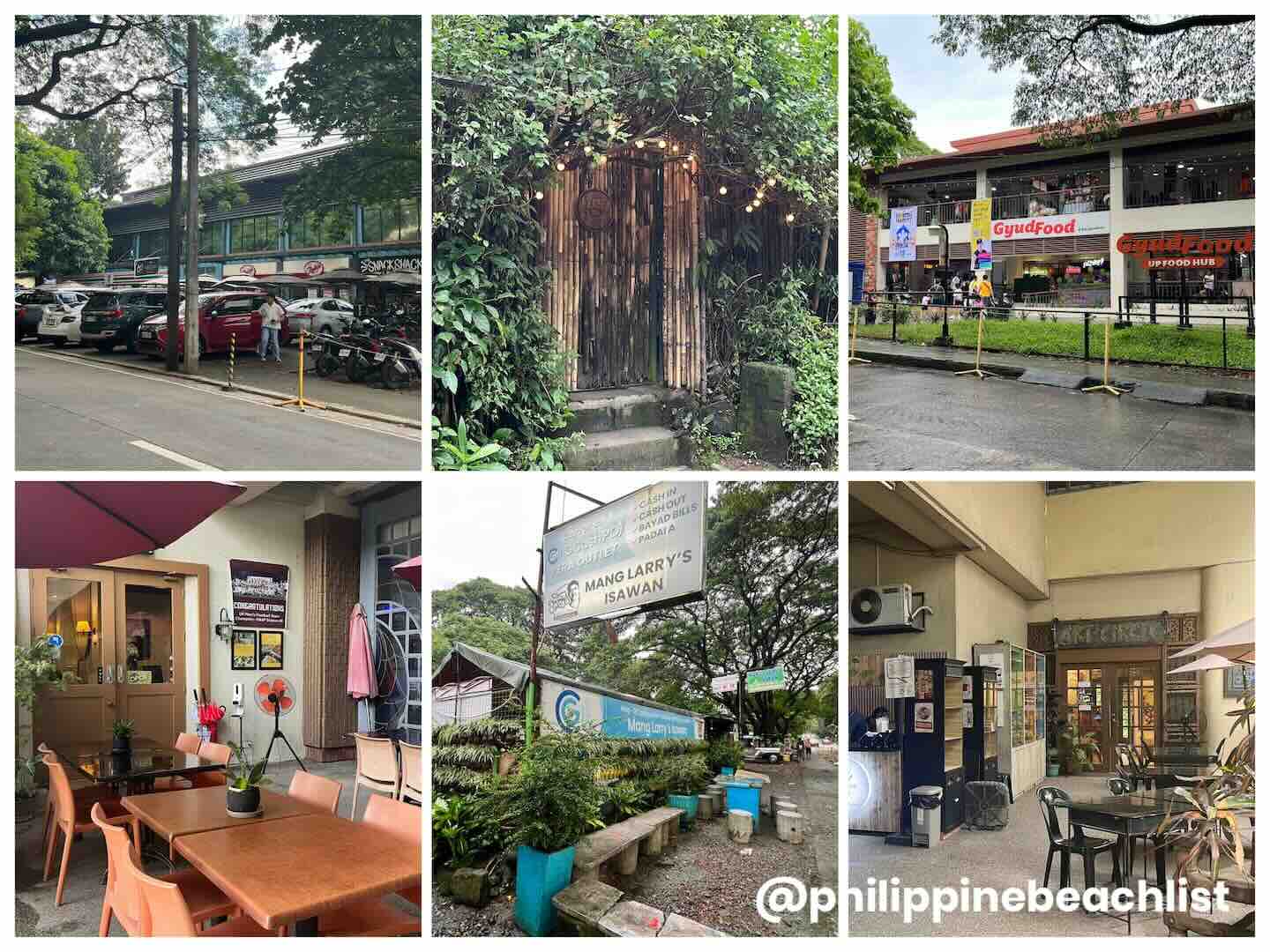







Comments